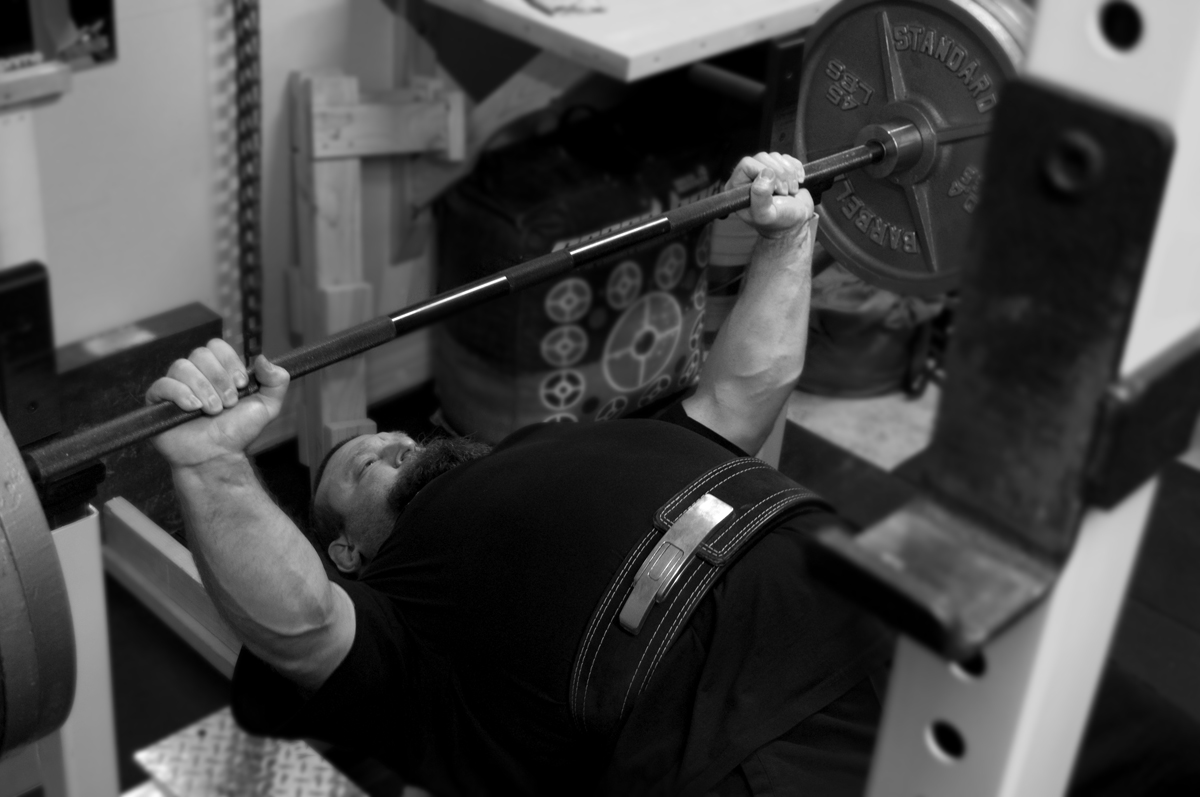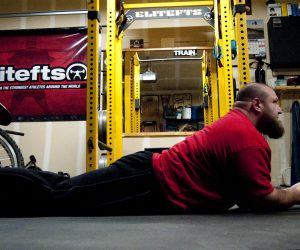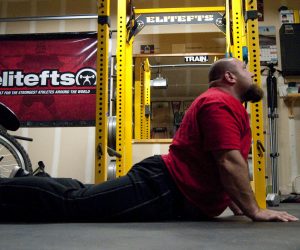
Since the first athletic endeavor, athletes have been taking every advantage they can to improve and win. Strength competitors aren't any different. They're always looking for an edge to help them become stronger than their opponent. This spirit has trickled down to powerlifters, who are always trying every method possible to increase their lifts. I love this idea, and I completely understand it. This attitude alone has advanced training, nutrition, technique, gear, injury prevention and more. It was, and is, this same attitude that pushed me to the top level in powerlifting.
Optimizing your leverages and putting your body in its strongest position are crucial for putting up the biggest bench possible. One simple way to do this is to increase the back arch when setting up for the bench. The first and most obvious advantage of this is to shorten the distance that the bar has to be pushed. You can decrease the movement by several inches or more by switching from a flat backed bench to an arched back bench. Imagine benching with a two- or three-board. The increased arch puts your shoulders in a much stronger pushing position, similar to doing a decline press. I feel that with a bigger arch, it's much easier to utilize the upper back and lats throughout the lift. A bigger arch also allows for a much easier position to help tuck the shoulder blades down and together, which puts your shoulders in a much safer position and helps ward off injuries. Why wouldn't you want to decrease the distance of a movement and put your body in a safer, stronger position?
RELATED: How I Benched 500 Pounds As A Teenager
Many lifters set up in an arched position, which is great, but rarely do I see them actually work on trying to increase the arch. The higher you can get your arch, the shorter the stroke and the more benefits you can derive from it.
So how do you increase your bench press arch?
There are a few ways this can be done. Some lifters just keep trying to arch more in each training session. I don't consider this a good plan because it's similar to lifters who stretch by squatting and think that eventually they'll be flexible enough to get in the correct position. Yea, it works eventually...sometimes...but there's a better way to go about it.
The main way that I've seen lifters increase their ability to arch more is with the use of bolsters. Depending on the size of a lifter's arch, he may start with a bolster as small as a tightly rolled up towel. He'll place the bolster under his low back and basically relax over the bolster, stretching his low back. Most lifters will do their bench warm ups with the bolster under their low back. Gradually, over time, they keep increasing the size of the bolster, which increases their ability to arch. This technique definitely works, and I've seen some lifters create amazing arches doing this.
I've tried the bolster technique a few times throughout my career but never really liked it. It has a place in helping people learn what an arch feels like and helping the really inflexible lifter, but it just never gave me the flexibility that I wanted. By the time I got it close enough to giving me the arch I wanted, it was too big to fit under my back anymore. For this reason, I've always just stuck with one simple stretch that I learned way back in my days working in physical therapy. I did this stretch with many back patients and have always thought of it as a good stretch for general low back health.
To do the stretch, lie face down in a push-up position. Push yourself up like you're doing a push-up, but try to leave your hips on the ground. The key to this stretch is to completely relax the low back, glutes, abs and hip flexors. This can be a very difficult stretch for many people for the first few times. I usually have people start by just lying prone (face down on the stomach). Then I have them put their hands in a wide push-up position and then push up with just their arms like they're doing a push-up. I only have them push up to the point of discomfort or to the point where their hips come off the ground. I have them do around 10 reps and then rest back in the flat, prone position.
At this point, if they can rest on their elbows, I have then stay in that position for a couple minutes. If they can't get in the elbows position, I repeat the 10 reps and have them try to push a little higher each time. Once they're resting in the elbows position, I have them continue to relax the low back, glutes, hip flexors and abdominal muscles to feel the stretch and then I have them go back to the push-ups with the hips on the ground for another set of 10, each time pushing a little higher. Once they can reach full extension or close to it, I have them hold that position for 30 seconds to one minute, focusing on relaxing the low back, glutes, abs and hip flexors. I let them come down to prone or the elbows to rest, and then I bring the hands in to shoulder width so that they can get the fullest extension. Then I have them push up with the hips down for another hold of 30 seconds to one minute.
RECENT: How to Fix Your Bench Press: The Setup
I've gotten to the point where with my last few stretches, I actually flex my low back while holding at the top and I try to pull it into even a little bit more of an arch. It's a very simple stretch and one that most of did as children watching television in the elbow position. Although simple, it's very effective at helping put us in a much stronger bench press position. I do this stretch before every bench session and before the bench press in meets. I've gotten lazy with this stretch every now and again, but when I do, I instantly see a negative effect in my benching.
I went in-depth in describing this stretch for the very tight people who rarely put themselves in low back extension. My guess, and hope, is that most people can immediately get in the elbows position. Then it's just a matter of doing some hips down push-ups in what I call a pumping motion. This will help center the nucleus in the vertebral disc and relax all the muscles. These push-up pumps can be done in sets of 10 to 20 followed by rest periods in prone or the elbows position. Once full extension is reached, hold the position for 30 seconds to one minute. Once you're more advanced in this stretch, flex the back into a more arched position while in full extension. I do full extension holds once or twice and then I'm done. When these are done regularly, it shouldn't take long at all to stretch your arch out before bench training.
This is a super simple stretch that can be done quickly, but the effects that it can have on your bench are huge. You can decrease your stroke; put your shoulders in a stronger, safer position; and make it easier to utilize the upper back and lats. Give it a try before your next few bench training sessions to see how much it can help.














Yes the same holds true for geared or raw lifters. I am training raw right now. Every time i get in a hurry and forget to stretch my back I know it. I end up taking a few mins to stretch before I move on to heavier weights that day.
I think the increase in flexibility will help your set up.
Chad